Content
Published:
This is an archived release.
One in five used emergency primary health care services in 2012
In 2012, 19 per cent of the population had consultation with the municipal emergency primary health care services. 36 percent of children less than 6 years of age have had a consultation during the past year. Among those with a lower level of education, the percentage that had a consultation with the emergency primary health care services was greater than among those with higher education.
| Emergency primary health care | General practitioner | |
|---|---|---|
| Both sexes | ||
| Total | 19 | 68 |
| 0-5 years | 36 | 64 |
| 6-15 years | 17 | 53 |
| 16-19 years | 21 | 63 |
| 20-29 years | 21 | 63 |
| 30-49 years | 16 | 68 |
| 50-66 years | 15 | 76 |
| 67-79 years | 16 | 86 |
| 80-89 years | 22 | 82 |
| 90 years and more | 21 | 59 |
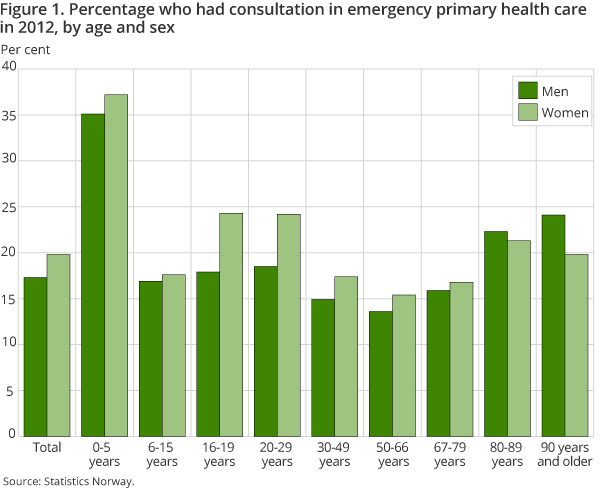
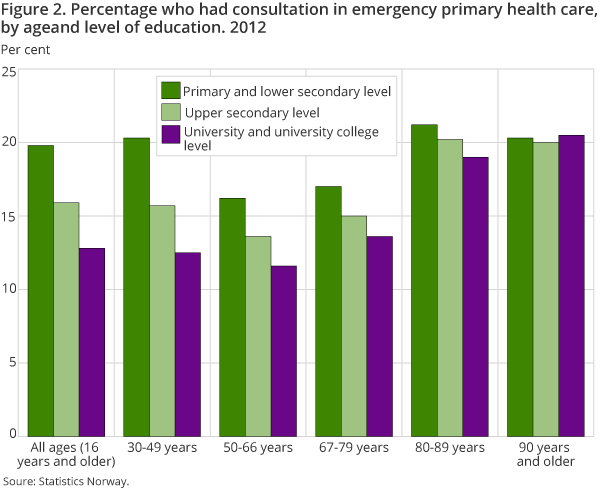
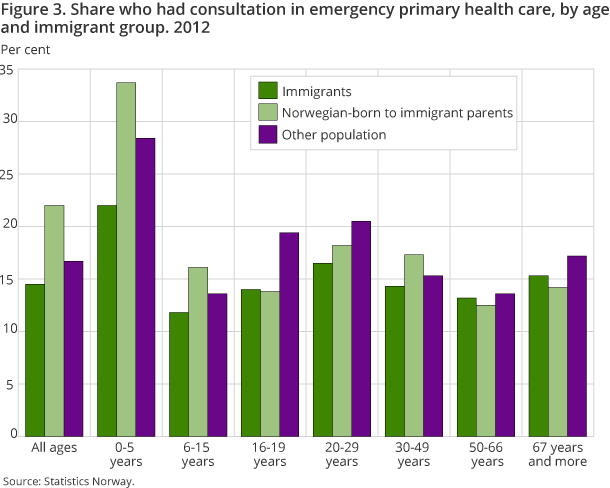
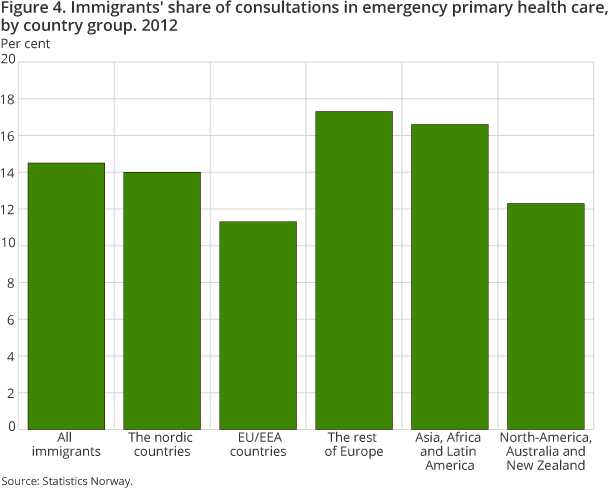
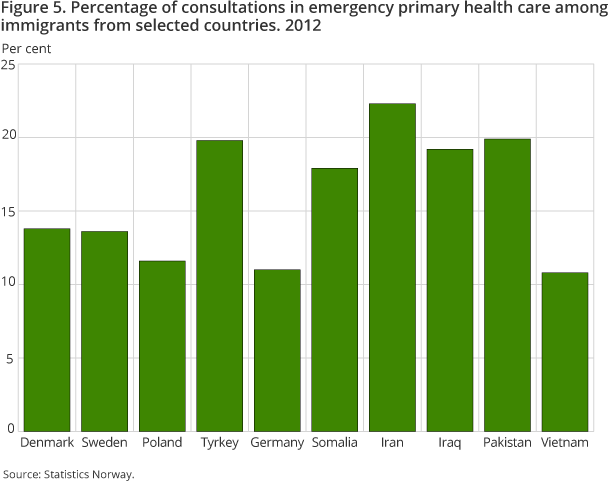
The emergency primary health care services are primarily used outside GPs opening hours. The Norwegian population had an average of 0.27 consultations in emergency primary health care, the corresponding figure for GP consultations is 2.6 1 per year. Thus, it is the youngest and oldest age groups who more frequently seek prompt medical attention for illnesses or injuries. The difference between men and women over the age of 80 is because a higher share of women live in nursing homes compared to men at the same age.
Persons with lower education are more frequent visitors
A higher percentage of those with a lower level of education used emergency primary health care services more frequent than persons with a higher level of education. In the age group 30-49 years one in five persons with compulsory education had had a consultation compared to just one in ten (12 per cent) of those with a university/college education.
Immigrants and emergency primary health care
The percentage of immigrants who had one or more consultations with the emergency primary health care services in 2012 was slightly lower than for the rest of the population, 15 and 17 per cent respectively. Norwegian-born to immigrant parents uses emergency medical services more than the other groups (see Figure 3). This group is young and, as mentioned above, young people use the emergency primary health care services more than other groups.
As for GP consultations, there is a large difference in use of emergency services between immigrants from different countries and regions. When we classify immigrants into five regions of origin , there is a low percentage (11-12 per cent) of immigrants from the EU/EEA outside of the Nordic region and North America, Australia and New Zealand using emergency services and a higher percentage (16-17 per cent) of immigrants from non-EU/EEA countries in Europe and Asia, Africa and Latin America using the services.
Use of emergency services varies between immigrant groups
The pattern of use seen in some of the largest immigrant groups in Norway (Figure 5) largely confirms the pattern that emerged when comparing larger regions. The highest percentage of immigrants that used the emergency primary health care service was from Iran, Turkey and Pakistan (22-20 per cent). The percentage of users of emergency services from Vietnam and Germany, were significantly lower (11 per cent).
1 The figure was corrected, 23 January 2014.
Municipal emergency primary health careOpen and readClose
Local authorities are required to have emergency primary health care services, which entails a 24-hour emergency telephone and a doctor/GP on duty to provide immediate medical assistance to anyone visiting or staying in the municipality (cf. Act relating to the municipal health services of 1984). For further details, see About the statistics.
Consultations at municipal emergency primary health care serviceOpen and readClose
The data source is the KUHR database, which is an administrative register for control and payment of reimbursements to health service providers. The following codes are extracted from the KUHR register:
• 2ad – Consultation with a doctor, day rate
• 2ak – Consultation with a doctor, evening rate
• 2fk – Consultation and emergency response to medical practice during out-of-hours services (new in 2012)
• 2nk – Emergency response from own home to medical practice for doctors on call at night (new in 2012)
To produce this staistics the KUHR register is merged with population registers on education and immigration background. These registers are merged based on national identity number. 11 per cent of the consultations are lacking national identity number. However, we have information on age and sex for this group, but no information on education and immigration background.
Contact
-
Inger Texmon
E-mail: inger.texmon@ssb.no
tel.: (+47) 95 27 50 06
-
Arne Jensen
E-mail: arne.jensen@ssb.no
tel.: (+47) 99 71 22 45
